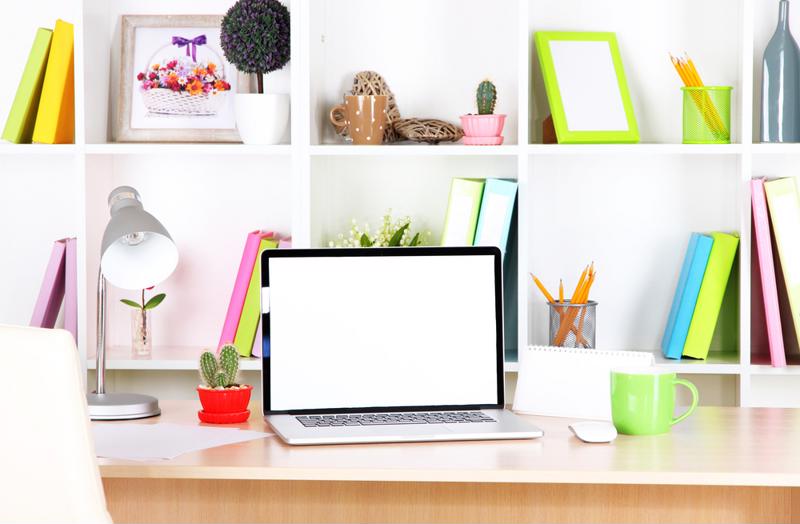What comes to mind when you hear the word “startup”? Do you instantly think of an open-floor plan office, with rows of long wooden tables of iMacs and Thunderbolt Displays festooned with Post-it notes? That’s a popular version of the startup workspace, one designed to promote collaboration and encourage a flat organizational hierarchy.
But the open-space plan may not be the best fit for every startup seeking an advantage in the crowded marketplace. Here are some tips for finding the most effective workspace layout for your company.
Balancing Privacy and Collaboration
Co-working spaces can have benefits that some young companies can’t afford to pass up. Being able to instantly share ideas (not to mention save money on space) can give startups a real leg up as they look to get off the ground.
But along with the pros of this model comes a major con: research shows that constant ambient noise, such as that present in an open-plan environment, creates a day-long drain on productivity.
- As reported by The New York Times, a 2008 study by Finland’s Institute of Occupational Health revealed that noisy offices can reduce productivity by up to 10% for cognitive tasks like reading, writing, and programming that rely heavily on short-term memory.
- 2013 research by the University of Sydney found that “lack of sound privacy” was a leading concern for workers in open office plans as well as partitioned cubicles.
- In trials conducted for The Journal of Applied Psychology in 2000, subjects who listened to hours of simulated office noise before attempting to solve several puzzles gave up more quickly than those who had not been subjected to the sounds.
It’s no surprise that many programmers, community managers, and other startup employees often resort to headphones to block out distracting conversations and background noise.
Some startups, such as Shopify, have implemented alternatives to the seemingly standard-issue open office plan. Shopify has used a “pod” system, with small rooms branching off from a central space that is shared by teams of six to eight people. This arrangement strikes a balance between privacy and the ability to easily interact with others, while minimizing the effects of ambient noise like unrelated office chatter.
Of course, in a distributed team working remotely, each member has the opportunity to set up a workspace suited to him- or herself. This flexible model is becoming more and more common for small startups, but requires the technology to support it.
“Some startups have implemented alternatives to the seemingly standard-issue open office plan.”
Don’t Overlook the Infrastructure of Your Workspace
Having solid internet infrastructure in place (whether in a shared workspace, a pod optimized for quiet, or a virtual office environment) is essential to startup success. Reliable connectivity for video, data, and voice services is just as necessary for a crwoded bullpen as it is for a company of remote employees, who depend on Google+ Hangouts, Skype, or another form of video conferencing to keep in touch.
But having a good setup is just one step on the path to success. It all has to be in service of a bold and executable idea, something that not every small business has. Startup success is dependent on many things going right, from having a viable idea to setting up a productive workspace to getting robust networking and communications in place.
 Working remotely is one alternative to an open office plan.
Working remotely is one alternative to an open office plan.
When getting a small business off the ground, it pays to consider your many options for office floor plans and connectivity as you shape your ideas and bring them to market. Strong infrastructure can make the difference in ultimately scaling your products and services so that they reach more customers.
The Best Office Setup for Your Startup
Of course, every business and its team are different; only you and your employees will know what type of layout will work for you. It may require some trial and error to find the perfect arrangement. That said, here are some things to keep in mind as you plan your workspace.
- An open floor plan can be great for exciting collaborations—especially in the early days of your startup—but irrelevant noise can negatively effect productivity. Find a setup that balances privacy and quiet with open space for co-working.
- Working remotely can be a good compromise for some teams.
- The floor plan is only one consideration for creating a space that is conducive to productivity. Make sure that you have the technical infrastructure to support your employees’ work. Connectivity is just as important to efficiency as the right floor plan.
- 5 Reasons Why Cloud Solutions are Essential for Small Business - February 4, 2024
- How to Migrate Your Business to the Cloud in 7 Steps - June 16, 2021
- How Beacon Technology is Revolutionizing Business and Marketing - March 18, 2021


